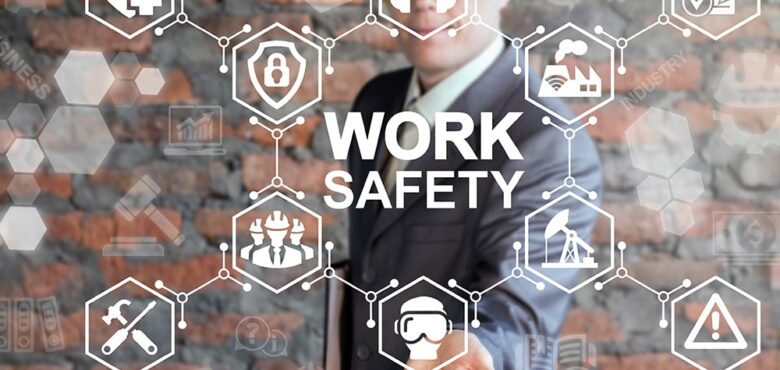Category:

- February 10, 2021
How to Make the Workplace Safer
Workplace safety should never be overlooked. The safety of staff is crucial to prevent injury and incidents. A safer workplace can increase the happiness of employees and also ensure operations run smoothly.
To increase workplace safety, follow these simple steps.
Training
Efficient training can result in less injury risk and more knowledge about how to overcome an issue, should one occur. There are many catastrophic injuries a person can suffer from, at work, out on a trip, or even at home.
If an accident were to occur in the workplace, it would be dealt with more sufficiently and safely if staff and appropriately trained. Training will also increase their awareness of potential dangers, which will reduce the risk of incidents.
Regular Cleaning
A clean workplace free from harmful bacterias can lower the risk of catching a cold or a virus. Daily cleaning protocols should take place to wipe down all surfaces and floors.
Clearing up the office mess will also reduce the number of hazards, which could result in an accident. For example, loose wires and cables could cause a person to trip up. This could hurt them or damage equipment. An organized and clear area will improve the safety of the workplace.
Engage in Conversation
A common work problem is employee conflict. No business wants their employees to disagree and cause tension at work. It can affect your work as well as theirs and may result in less motivation and work being complete.
This may seem like a strange way to make the workplace safer, but it definitely can help. An argument or disagreement between colleagues or clients could result in an incident. Ensuring your employees are happy will often come from good communication. To increase communication and employee happiness, you could allow them to partake in group bonding activities such as sports or games. Giving out small rewards to employees who follow safety policies keeps them engaged, which can make a big difference in reducing workplace injuries.
Identify Hazards
Identifying all potential safety hazards can lower the risk of accidents. Without noticing what hazards can cause incidents, they will be overlooked and not labeled or used correctly.
For example, there might be a crack in the floor or a slippery surface that needs attention. Servicing the floor to make sure it is safe will reduce the chance of slipping or falling. Make a list of any safety hazards that are identified. Then work from this list to make changes, eliminate these hazards, and place signage and warnings to employees.
Use a Workplace Clinician
If you are struggling to identify all hazards or have no idea where to start, an occupational clinician will review the area and help you identify the safety dangers.
They will not only identify the issues, but they will also improve the current hazards to limit the workplace dangers that can cause accidents.
Use Labels
Labeling dangerous chemicals or hazardous objects will indicate to staff to avoid touching or using the item. Labels work to communicate important information. For example, you may want to warn staff that a ceiling is low. Therefore they will know to lower their heads and avoid a head injury.
Although the hazards may be clear and obvious, labels will prevent employees from making a workplace accident claim and warn them in case they do forget.
The Right Equipment
Ensuring all staff has the right tools to complete their work will increase efficiency and prevent any potential hazards. For example, if you work with chemicals, a laboratory coat and safety goggles will keep the chemicals away from your skin and eyes. This will help make a safer workplace environment.
Regular cleaning and inspection of the equipment will also guarantee they are safe to use and in good condition. Malfunctions of equipment can cause more danger. As per the example above, if goggles are broken and fall off during chemical use, the chemical has more chance of contacting your eye and causing loss of vision or pain.
Recommend Breaks
Allowing your staff to have regular breaks, or get some fresh air to stretch their legs for five minutes, will improve workplace ergonomics and employee health. Getting in a walk during your lunch break or mid-afternoon can help loosen stiff joints and relax the muscles.
Stretching and exercise can reduce the risk of motion injury, as muscles and joints will be in a healthier condition. Thus, they are less prone to injury.
Reward Safe Behaviour
If your workplace is fairly strict and does not offer many rewards to its employees, you may want to rethink that. By rewarding staff that consciously act safe and reduce the risk of danger should be rewarded.
Rewards can be personal and include an extended lunch break or bonus. Or, you could reward the entire workforce if they all adhere to the safety precautions and help make your workplace safer.
With these tips in place, your workplace will be safer for you and your staff. Ensuring the staff is well-trained, wear and use safety equipment, and are aware of potential hazards will reduce the number of accidents. Also increasing workplace morale and employee happiness will encourage them to act safe and be cautious of the safety rules.

